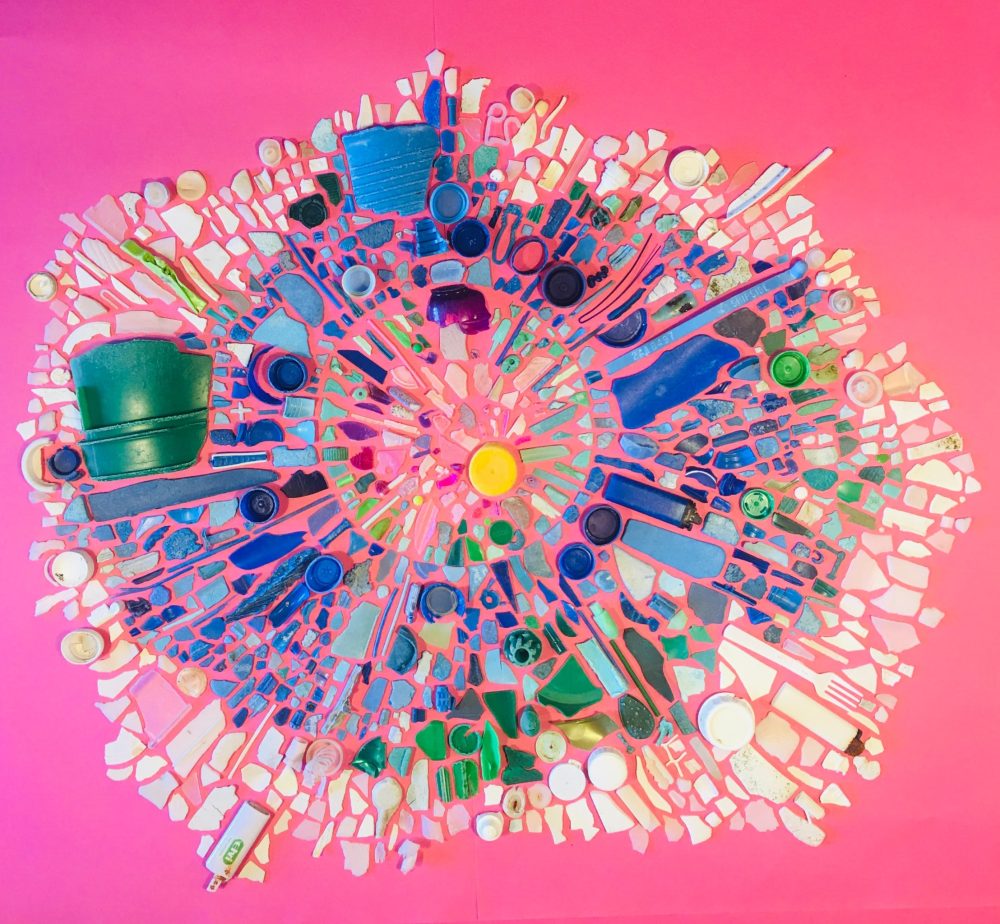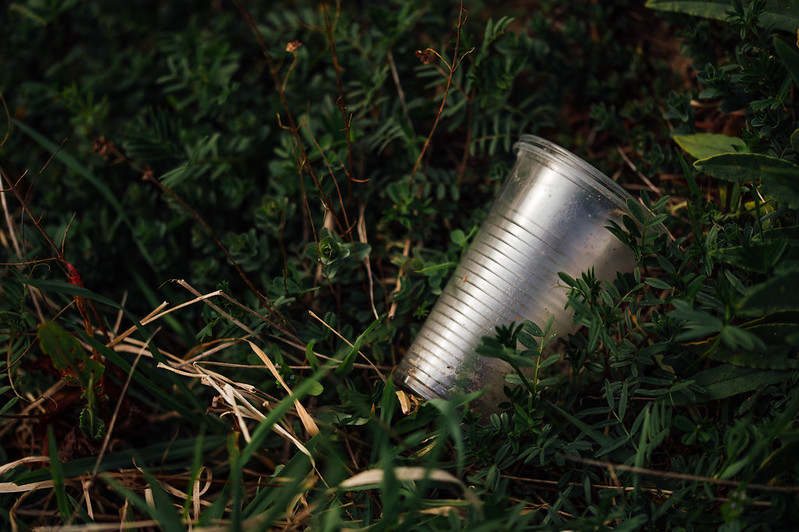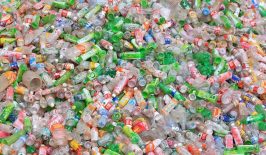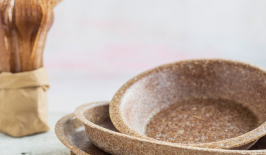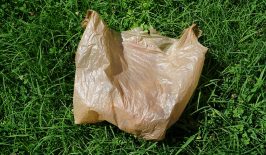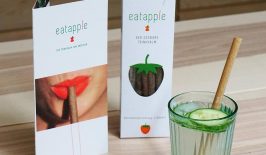Littering our parks, bus stops and beaches, plastic waste, one of the most serious environmental problems of our times, is quite literally everywhere. Could bioplastics provide a solution? And are they really as sustainable as we might think?
Most of us have come across bioplastics in some form or other, whether it be shopping bags or bin bags for organic waste. They’re also commonly used in food packaging: for vegetables, fruit, eggs, meat, drinks and dairy products. While most conventional plastics are derived from fossil fuels, bioplastics are made from renewable biomass sources – predominantly corn, potato, wheat, sugar cane and sugar beet.
Bioplastics are not just one single type of material. Instead they comprise a whole family of different materials with different properties and applications.
According to European Bioplastics, a plastic material is defined as a bioplastic “if it is either biobased, biodegradable, or features both properties.”
Broadly speaking, materials are classed as biodegradable if they are capable of undergoing degradation into their smallest constituent components (e.g. carbon dioxide, oxygen and ammonia) with the help of microorganisms or enzymes, and are classed as biobased if they consist of renewable primary products. The bioplastics most commonly used in packaging today include:
- Starch-based blends
- Polylactic acid-based blends (PLA blends)
- Bioplastics made from thermo-plastically modified starch (TPS)
- Bioplastics made from PLA
- Cellulose-based plastics
- Biobased bioplastics (bioPE, bioPET)
Blends typically consist of compounds containing one biobased and one biodegradable fossil component. PLA and PLA blends are, for instance, used in the manufacture of films and foils, cans, beverage and yoghurt containers, vegetable trays and bottles.
A Brief History of Bioplastics
Bioplastics are not as recent an invention as one might think. The Hyatt brothers had already developed celluloid – a thermoplastic polymer based on cellulose, the main component of most plants – as far back as 1869. The material was subsequently used to make camera film, spectacle frames and toys. Known as ‘cellophane’ since 1923, it is still used for packaging today.
In fact, until the 1930s, plastics were almost exclusively produced from renewable sources. The use of fossil resources to make plastics only really started after the end of the Second World War. There were no further significant developments in the field of bioplastics until the 1980s, when concerns turned to sustainability, leading people to search for alternatives to petroleum-based materials. While the main focus of this research was on thermoplastic starch (TPS), cellulose acetate and polylactide (PLA), manufacturing processes were also developed for biobased polyethylene (BioPE), polypropylene (BioPP) and other plastics.
Accounting for around 80 percent of the bioplastics market, thermoplastic starch is currently the most prominent and widespread representative of the bioplastics family. In Europe, Africa and North America, its main plant-based sources are corn, wheat and potato, whereas in Asia it is mostly made from tapioca. Among the reasons why bioplastics have so far failed to make a big impression on the market are high prices, low availability and limited performance compared to fossil plastics. Its disposal also remains a problematic issue.
Bioplastics often end up being thrown away with conventional plastic waste
In 2019, the EU produced a total of 79.6 million tonnes of packaging waste. At 15.4 million tonnes, the short-lived plastics used in packaging films, bags and single-use tableware were the second most significant material that was being tossed away, just behind cardboard in first place. This is an area where bioplastics offer huge potential.
Technically speaking, compostable plastics should be disposed of in the organic waste bin. However, with consumers finding it difficult to distinguish between bioplastics and conventional plastics, bioplastics frequently end up in the general rubbish or plastic recyclables bins.
Because they often interfere with the recycling process of conventional plastic packaging, this means that biodegradable materials often end up being separated out, and ultimately incinerated. Furthermore, because municipal waste disposal plants have no way of distinguishing between bioplastics and conventional plastics, even if biodegradeable plastics do end up in the organic waste, they may still end up being separated out and incinerated too. On top of this, since bioplastics simply take too long to degrade, even many state-of-the-art waste disposal plants do not fully compost materials marked as biodegradable.
Just how “natural” are bioplastics really?
While just a few years ago expectations for bioplastics were high, their promise has not yet been fulfilled. There are several reasons why:
- While there is a clear ecological benefit in using renewable biomass, and not depleting our non-renewable fossil fuels to make plastics, the carbon emissions associated with growing the crops and converting those into the chemicals that are needed, also needs to be taken into account. Bio-plastics are certainly not free of environmental impact.
- It is true that the production, use and disposal of biodegradable packaging generates less CO2 and uses less petroleum, but these advantages are juxtaposed by the fact that the crops grown for bioplastic production can have detrimental impacts on soil and bodies due to acidification and overfertilisation. And in a world where fertile land is increasingly scarce, diverting it away from food crops and using it to grow crops for biomass instead could be seen as socially irresponsible.
- Many of the petrochemicals that are used to produce plastics are in fact a by-product of the oil refining process. Our economy remains heavily reliant on oil, so using its by-products might make more sense than letting it go to waste.
- At present, the biodegradable properties of bioplastics by and large do not generate much advantage since, as mentioned above, they frequently end up in the recycling plant mixed together with conventional plastics. On top of this, they require high temperatures to fully biodegrade.
- The prefix ”bio” should be taken with a pinch of salt: plastics may be labelled as “bio” if they are biodegradable but not made from renewable sources. Vice versa, although biobased plastics must be fully or partially made from biomass, they do not have to be biodegradable.
Although, to all intents and purposes, bioplastics are a worthwhile concept, there is still some way to go where a number of the more practical aspects are concerned.
In the future, we are likely to see bioplastics which will be more eco-friendly than their conventional fossil fuel equivalents. The long-term aim should be to replace conventional plastics with bioplastic alternatives in all cases – bioplastics that are produced from renewable biomass sources and are biodegradable too.
Because the plants that form the base of bioplastics regrow quickly, bioplastics ultimately make more efficient use of raw materials. Of course plants also sequester atmospheric carbon dioxide (CO2) while they grow. Using these plants to produce bioplastics means CO2 is removed from the atmosphere and stored throughout the entire life of the product, and greenhouse gases reduced. In environmental terms, it is clear bioplastics are superior to conventional plastics.
What can we do as consumers?
Primarily, we should question our personal habits of plastic consumption: do I make my coffee with one-use pods or should I decide to buy the slightly less convenient (and maybe more expensive) refillable product? Can I do without plastic bags for my rubbish disposal and use paper bags?
When it comes to buying and storing food, cloth bags, tins and glass containers are eco-friendly and durable options that can help you to cut down on your plastic consumption. For ideas on where to start reducing your plastic consumption, read our article 7 Quick and Easy Ways to Cut Down on Plastic for more tips. There are an increasing number of innovative plastic-free alternatives nowadays too, from edible straws made from apple fibres, to paper laminate made from corn and spoons made from cocoa. Although it’s not yet clear when (and if) these new products will establish themselves on the mainstream market.
Since 2021 the EU no longer allows single-use plastic products – including disposable cutlery, straws and cotton buds. The new law states that by 2025, plastic bottles should be made of 25% recycled content, and by 2029 90% of them should be recycled. This reduction in the consumption of the single-use plastic products opened a major opportunity for bioplastics to become more widely established than ever before.
Want to find out even more?
Environmental Action Germany (DUH) has published a comprehensive paper on the subject of bioplastics. The pdf is available here.
This article was originally published in 2013. It has since been updated on 04/21/2022 by Marharyta Biriukova.
